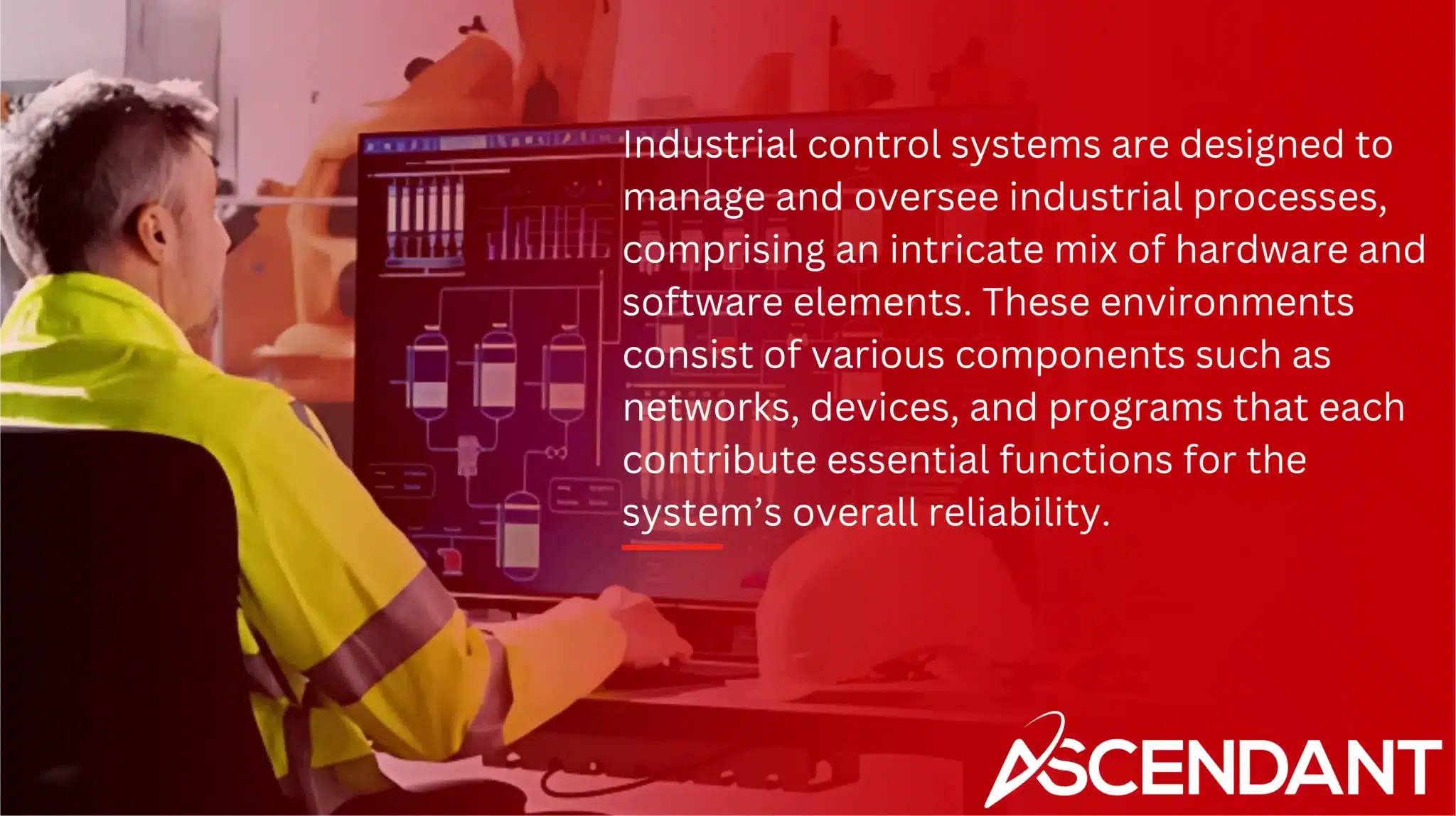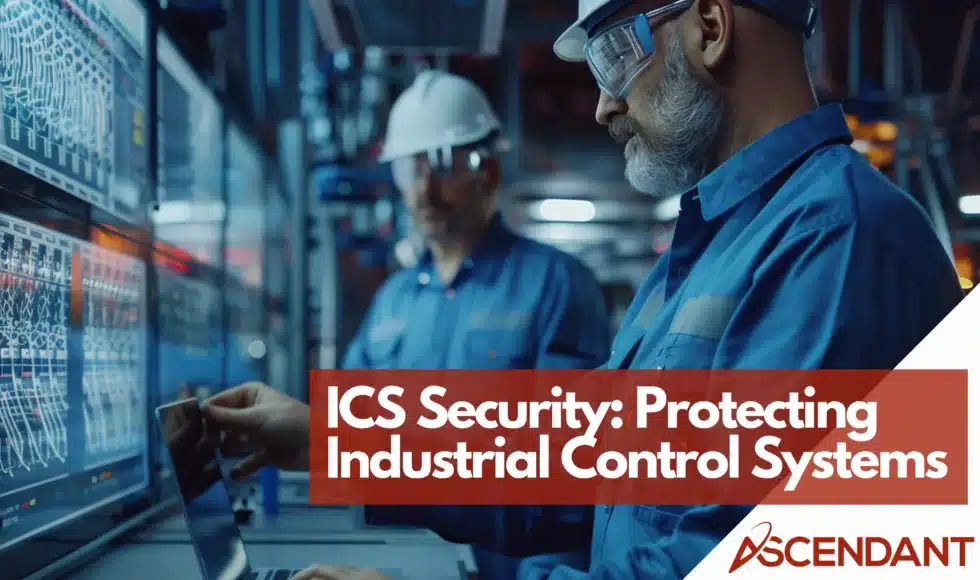ICS security is about protecting the systems that control critical infrastructure like power and water supplies from cyber threats. These systems are vital to our daily lives, but they are also vulnerable to attacks. This article will explain what ICS security entails, why it’s crucial for preventing disruptions and ensuring safety, and how you can secure your industrial control systems.
In This Article:
- What is ICS Security?
- Key Components of ICS Security
- How ICS Security Works
- Importance of ICS Security for Critical Infrastructure
- Common Challenges in ICS Security
- Major Threats to ICS Environments
- Best Practices for Enhancing ICS Security
- Role of Physical Measures in ICS Security
- Integrating ICS Security with Overall Cybersecurity Strategy
- Choosing the Right ICS Security Solution
- Case Studies of Successful ICS Security Implementations
Key Takeaways
- ICS security is essential for protecting critical infrastructure and ensuring operational continuity by preventing disruptions from cyber threats.
- Key components of effective ICS security include asset inventory, vulnerability management, network segmentation, and strict access controls.
- The integration of ICS security within a broader cybersecurity framework enhances resilience and compliance, addressing both internal and external threats to industrial environments.
What is ICS Security?
The security of industrial control systems is a specialized area within cybersecurity, which is dedicated to the defense of systems tasked with controlling and overseeing industrial processes. Such control systems are vital for the functioning of critical infrastructure sectors as well as manufacturing industries. Consequently, securing these industrial control system ics components from disruptions or hazards that could lead to operational halts or physical dangers is essential. The chief aim here lies in preserving the reliability, accessibility, and safety of those involved in various industry operations. For additional details on this topic, please look into our industrial control systems FAQs.
Given how interconnected modern-day industrial systems have become today, it has never been more important to implement robust ICS security protocols reliably. These protective measures guarantee ongoing workflow by warding off intrusions and supporting continuous operation across vital infrastructure services—ensuring not only process efficiency but also safeguarding both workforce welfare and public health.
To sum up, strong ICS security serves a crucial role in ensuring uninterrupted delivery of indispensable services that might otherwise be interrupted due either cyber threats or malfunctions within the system itself. Strong governance through detailed security policies paired with an extensive grasp of various ICS protocols allows organizations to effectively minimize risks while maintaining steady functionality within pivotal structures.
Key Components of ICS Security

Industrial control systems are designed to manage and oversee industrial processes, comprising an intricate mix of hardware and software elements. These environments consist of various components such as networks, devices, and programs that each contribute essential functions for the system’s overall reliability. Establishing a secure ICS encompasses multiple strategies: executing meticulous inventories of assets within the system, managing susceptibilities in ICS apparatuses methodically through robust protections at endpoint levels across the network, and consistently updating software or firmware to shield against newly discovered vulnerabilities.
Ensuring all items on an ICS network are fully cataloged facilitates comprehensive oversight over every piece in play—crucial for maintaining security throughout these complex systems. As part of vulnerability management efforts within this context, it is indispensable. It involves rectifying potential weak spots among different elements constituting ICS setups while protecting individual endpoints from threats effectively prevents breaches at singular points along with networks’ span—a critical line of defense strengthened Via regular patch updates closing gaps hackers might exploit.
Instituting solid safety measures tailored specifically toward guarding industrial control mechanisms is integral to constructing defenses capable enough to repel cyberattacks reliably. Discovering and monitoring assets actively supports effective preventative policies targeted towards ensuring uninterrupted operations across vital infrastructure sectors—thus promoting steadfast resilience amidst escalating digital dangers.
How ICS Security Works
Ensuring efficient system operation within ICS environments necessitates ongoing surveillance and the capacity to detect incidents as they occur. Access to comprehensive dashboards is essential, as they provide crucial operational insights by displaying the status and functioning of these systems. A significant number of ICS networks are plagued by subpar visibility levels, which complicates efforts for effective monitoring and auditing.
Due to their specialized characteristics tied to industrial operations, incident detection and response in ICS settings require strategies tailored specifically for these scenarios. The overarching objective of security measures concerning operational technology (OT) lies in safeguarding processes and personnel while maximizing profits—all achieved through diminishing the exposure risks linked with cyber threats.
It’s imperative that organizations employ a robust ICS security solution paired with an established emergency response protocol. This should encompass provisions such as immediate communication via a designated ICS security contact point in order to effectively reduce hazards and maintain safety amidst any cybersecurity incidents.
Importance of ICS Security for Critical Infrastructure
The safeguarding of critical infrastructure sectors, including energy, water and transport systems, hinges on the integrity of ICS systems which facilitate continuous access to vital services. Ensuring robust ICS security is crucial for upholding worker safety and averting any service interruptions that could lead to profound economic or societal harm.
Cyber threats pose a significant risk with potentially catastrophic consequences for the operation of ICS within these essential sectors—threats such as considerable disruption in operations, financial damage, and endangerment to public safety are not uncommon. Many older legacy systems remain susceptible due to their outdated security provisions. Rectifying these weak points is imperative for sustaining operational tenacity and guaranteeing uninterrupted utility services integral to seamless ICS functionality.
To secure critical processes effectively and uphold key infrastructure operations requires comprehensive adherence to strong security policies coupled with an exhaustive comprehension of established ICS protocols. This preventative stance does more than just ensure public protection—it bolsters the strength and adaptability across various segments constituting our nation’s vital infrastructure.
Common Challenges in ICS Security
Securing industrial control systems against modern cyber threats poses significant challenges. ICS networks, especially older ones, were not conceived with current cybersecurity measures in mind, which leaves them exposed to potential attacks. These traditional control systems frequently do not have the cybersecurity features now standard in newer technologies, creating distinct difficulties for maintaining secure ICS environments.
When industrial control systems are integrated with IT frameworks, discrepancies can arise due to different management approaches and priorities between the two domains. The necessity for remote access Complicates security strategies—especially when considering users from outside of the organization—which underscores the importance of tackling these obstacles head-on to maintain robust ics security that shields critical infrastructure from a growing array of cyber threats.
Legacy Systems
In the realm of ICS environments, legacy systems present substantial security risks given the prevalent cyber threats today. The antiquated architecture and lack of contemporary protective measures in these systems leave them vulnerable to cyber attacks. Despite being a necessity, updating and securing these platforms is fraught with difficulties owing to their prolonged service life and intrinsic weaknesses.
Industrial control systems like distributed control systems and programmable logic controllers frequently operate on outdated operating system frameworks necessitating meticulous patch management and upkeep. The imperative for safeguarding these intricate infrastructures cannot be overstated as they are integral to maintaining uninterrupted power generation along with various other vital operations.
IT/OT Convergence
The merging of information technology (IT) with operational technology (OT), known as IT/OT convergence, is gaining prominence in contemporary industrial settings. This fusion presents multiple security issues by enlarging the potential attack surface and heightening susceptibility to cyber threats.
As a consequence of this integration between IT and OT systems, there can be an uptick in security dangers due to many OT infrastructures being insufficiently protected from cyber threats. To effectively oversee these cybersecurity risks and ensure continued operational efficiency while preserving strong operational technology security, it’s critical that the IT and OT sectors work together collaboratively.
Remote Access
The introduction of remote access for both in-house and external users amplifies security challenges, leading to greater expense and intricate safeguarding requirements. To thwart unapproved entries, particularly concerning remote terminal units as well as systems dedicated to remote monitoring, strict security protocols must be enforced. Weaknesses in access control could escalate susceptibilities that obscure the clear observation of operational processes, consequently jeopardizing reliability and safety.
To combat cyber incidents decisively while preserving critical operation integrity requires setting up a centralized oversight mechanism along with extensive observability tools. Implementing secure physical access alongside meticulous data acquisition methodologies is imperative to diminish hazards connected with distant accessibility options.
Major Threats to ICS Environments
Industrial control systems are increasingly vulnerable to external dangers, including cyber intrusions, network disruptions, and unauthorized data access. These threats can result in major operational setbacks and could also have dire consequences for public safety. When the security of operational technology is compromised, it often leads to costly periods of downtime, potential physical harm to the infrastructure involved, and elevated risks concerning overall safety.
Not all threats originate from outside entities. ICS environments face substantial internal risks as well. Those with insider access have the capacity to inflict notable damage unless robust protective measures are enforced. To intentional actions by insiders, inadvertent mistakes made by personnel account for a considerable portion of industrial control system security incidents.
To effectively safeguard against these numerous challenges, requires an integrative strategy tailored towards fortifying ICS security that takes into account both technological defenses and human elements within these critical systems.
External Threats
Combining information technology with operational technology typically results in a larger scope for potential cyber threats. Throughout the convergence of IT and OT, numerous OT systems remain insufficiently protected from these cyber dangers. Vulnerabilities associated with insecure remote access can significantly obstruct operational awareness, affecting both the continuity of operations and safety measures.
Industrial Control Systems (ICS) are frequently at risk of malware attacks that may come through physical interfaces or via online connectivity. Recent warnings have shed light on security weaknesses within ICS software provided by key industry players, indicating serious risks for disruption should they go unmanaged.
It is crucial to enforce stringent security protocols to shield against such external cyber threats effectively.
Internal Threats
If not properly managed, internal threats can become a significant issue for individuals who possess the capability to access ICS systems. Inadequate control over this access when it comes to machines and systems might culminate in considerable harm due to such internal dangers. The vulnerability of ICS systems is often heightened by the absence of robust authentication measures, which amplifies the potential for unapproved entry.
By implementing stringent access controls, it becomes possible to confirm that only verified users have interaction privileges with vital ICS components. It’s essential to block unauthorized devices from engaging with vulnerable segments of ICS in order to diminish internal security risks and preserve the integrity of operational procedures.
Human Error
Personnel with limited experience tend to commit mistakes that can interrupt the functioning of industrial control systems. Such errors by humans are a notable cause behind security infringements within ICS, causing interruptions in operations and creating weaknesses susceptible to exploitation through cyber threats. The construction of human machine interfaces is critical in lessening these mistakes.
Allocating resources towards educating and enhancing the expertise of personnel could markedly diminish the probability of human errors affecting the security of ICS. Staff proficient in managing and securing industrial processes play an essential role in upholding both their dependability and safety.
Best Practices for Enhancing ICS Security
Strengthening the security of ICS environments necessitates a range of established protective practices to shield essential systems and functions. A fundamental tactic is network segmentation, which serves to partition critical infrastructure from networks that are not as secure, thus guarding them against potential cyber threats. The adoption of network segmentation as part of an all-encompassing security approach helps thwart intruders from navigating freely within the network once they have penetrated initial barriers.
To combat newly emerging cyber threats and address known vulnerabilities, it’s imperative for organizations to consistently apply patches and updates. Efficient patch management for ICS entails assessing updates thoroughly and applying them in a manner that doesn’t disrupt ongoing operations.
Stringent access controls are pivotal in protecting sensitive information and blocking unwarranted intrusion into vital ICS components. Employing these key best practices equips organizations with stronger defenses in their ICS protection strategy while reducing exposure to risks.
Network Segmentation
Segmentation within ICS networks plays a pivotal role in confining the consequences of a cyber attack to an isolated system, thereby safeguarding other interlinked processes from impending threats. By implementing effective network segmentation, one can significantly reduce the horizontal progression of cyber threats across ICS environments, bolstering their security infrastructure.
By curtailing the ability of attackers to move sideways through ICS networks, network segmentation ensures that any infringement is localized and prevented from proliferating to additional vital sectors. To preserve robust ICS security integrity, it is imperative to consistently monitor network baselines and conduct periodic assessments of network segmentation strategies.
Implementing Access Controls
It’s crucial to implement rigorous access controls in order to protect confidential data and thwart non-permitted entry into vital ICS environments. Ensuring that users and devices are granted only the necessary minimum level of permission required for their functions, as per the least privilege approach, greatly diminishes possible pathways for attacks.
Solidifying these access measures demands extensive security policies that oversee procedures and apply stringent supervisory control along with physical safeguards. By fortifying physical barriers and upholding precise data acquisition standards, organizations can preserve the stability of their ICS systems against diverse cyber threats.
Regular Patching and Updates
The prompt application of patches and updates is vital to remediate known weaknesses, markedly diminishing the chance of being compromised by cyber threats. Crafting a robust patch management plan requires ranking updates according to their risk potential and significance to operations, which guarantees that serious vulnerabilities are dealt with swiftly.
Employing a methodical strategy for managing patches bolsters the security of software and firmware within ICS environments by keeping them current. Periodic maintenance routines coupled with effective communication and reaction plans play crucial roles in averting security incidents, thus preserving the uninterrupted provision of essential services.
Role of Physical Security Measures in ICS Security
Safeguarding industrial control systems (ICS) from unauthorized physical intrusion and potential damage hinges on the effectiveness of physical security measures. Creating a secure boundary around facilities housing ICS, coupled with stringent access controls to regulate who can enter these zones, is critical for thwarting unapproved entry and guaranteeing the physical safety of these areas.
Enhancing the resilience of sensitive ICS operations requires multiple defense layers that include implementing fire detection mechanisms and regulating environmental conditions adequately. Diligent adherence to industry standards like ISA/IEC-62443-2-1 combined with continuous oversight of such security protocols is indispensable in maintaining the integrity of environments where control systems operate.
Integrating ICS Security with Overall Cybersecurity Strategy
Integrating security for Industrial Control Systems (ICS) into an all-encompassing cybersecurity framework is essential to reduce vulnerabilities unique to industrial settings. By doing so, it bolsters the robustness of critical infrastructure in the face of cyber threats while maintaining adherence to mandatory regulatory standards like NERC CIP.
Through cooperative efforts between public and private entities and by synchronizing ICS security strategies with tailored compliance requirements for each industry, a thorough safeguard against evolving threats can be achieved. Setting clear objectives for cybersecurity performance along with applying systematic security measures are vital steps in diminishing potential dangers that could affect both business operations and national safety.
Choosing the Right ICS Security Solution
In the realm of industrial processes, a competent ICS security solution is identified by its exceptional capability for anomaly detection to scrutinize any abnormal activity. To safeguard your investment in ICS security against obsolescence, it’s essential to opt for solutions that demonstrate adaptability to new technological advancements and the changing landscape of cyber threats.
It is imperative when picking a security provider to carefully consider their standing and client testimonials as these are indicative of their trustworthiness and efficacy. A comprehensive evaluation of total ownership costs – factoring in both upfront expenditures as well as recurring fees for maintenance and support – is necessary for selecting an enduringly robust ICS security solution.
Case Studies of Successful ICS Security Implementations
Illustrative instances from industry show the impact of carefully executed ICS security strategies in reducing vulnerabilities. For example, a prominent car manufacturing facility introduced an effective ICS security system and observed a decrease in unauthorized access events by 70% within twelve months.
Similarly, an extensive water purification plant embraced network segmentation alongside stringent access controls. This strategy effectively curtailed potential exposure to cyber threats while simultaneously boosting adherence to regulatory standards. Such examples underscore the critical need for integrated ICS security measures that strengthen defenses against cyber challenges across diverse industrial environments.
Summary
Ensuring the security of industrial control systems is crucial for the safeguarding of critical infrastructure, which in turn maintains the safety and continuity of essential services. By understanding the fundamental elements involved in securing ICS environments, tackling prevalent difficulties, and implementing recognized best practices, entities can bolster their defensive measures against potential threats.
To keep ICS security robust over time, it must be integrated within a comprehensive cybersecurity approach. Selecting appropriate protection solutions and regularly updating as well as patching controls are key components to staying ahead of vulnerabilities. Demonstrations from real-world applications have proven these actions effective at diminishing dangers while preserving uninterrupted operations. Organizations that take such preventive measures not only secure their own control systems, but also contribute significantly to societal resilience and security.
Frequently Asked Questions
What is ICS security?
ICS security is essential for safeguarding the systems that control and monitor industrial processes, ensuring their integrity, availability, and safety. Protecting these systems helps prevent potential threats that could disrupt operations and compromise safety.
Why is ICS security important for critical infrastructure?
Securing ICS is crucial for protecting the physical safety of employees and guaranteeing uninterrupted provision of essential services, as interruptions can result in substantial economic and social consequences.
Emphasizing this security sustains operational consistency and preserves confidence in critical infrastructure among the general public.
What are the common challenges in ICS security?
Common challenges in ICS security involve managing legacy systems that lack modern security features, addressing risks associated with IT/OT convergence, and ensuring robust security measures for remote access.
These factors can significantly complicate the security landscape.
How can organizations enhance their ICS security?
To enhance ICS security, organizations should focus on network segmentation, enforce strict access controls, and consistently apply patches and updates to mitigate vulnerabilities.
These measures are essential for protecting critical infrastructure effectively.
What role do physical security measures play in ICS security?
Physical security measures are vital in preventing unauthorized access and damage to Industrial Control Systems (ICS). Implementing secure perimeters and robust access controls is essential for maintaining the integrity of these systems.



